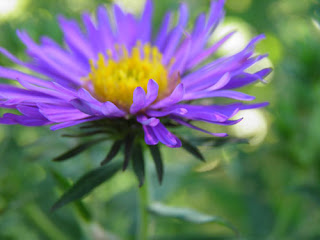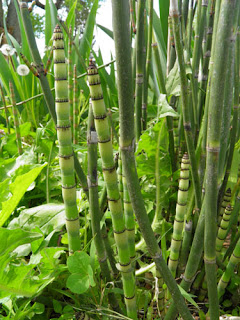posted on Tuesday, April 17th 2012 2:47 pm |
|
In this part of my preparedness series, I will talk about different common and uncommon diseases, illnesses and other health inflictions that wouldn’t be easily treated during a long term crisis. This is not a replacement for medical advice, it is just my notes on how to cope with the situation using herbs if no medical help was available due to a long term crisis or other disaster scenario. It is intended for educational purposes only. All cases of tuberculosis should be assessed and treated by a medical provider when necessary.
What is it? Also known as “TB” or the consumption, tuberculosis (Mycobacterium tuberculosis) is a bacterial infection that usually attacks the lungs but it can also travel through the bloodstream and the lymph nodes to other parts of the body. It is a contagious air-borne disease that is easily spread by casual contact. It is easily spread through coughing, sneezing, spitting, discharging mucus and kissing.
Why should it be feared? In the 19th century, 25% of the deaths in Europe were caused by tuberculosis. To this day, 3 million people die from tuberculosis every year, mainly in developing countries. The bacteria usually remain dormant in the body. 90% of those infected with the bacteria produce tuberculosis antibodies but will show no signs of infection and cannot spread the disease. The disease is often difficult to treat and strains are now showing up that are resistant to antibiotics. About 1% of new cases in New York City are caused by bacteria that are resistant to 1 antibiotic and 7% of the recurrent cases are resistant to 2 or more antibiotics. Those who are infected with the resistant bacteria has only a 50% chance of survival. Complications can cause lungs to collapse, fluid to form between the lungs and the lung membrane, complete obstruction of the airway passages and more. It can also turn into military disease and tubercular meningitis.
What should be done? During normal times, antibiotics should be taken. Pyrazinamide and streptomycin are the main antibiotics used. If no antibiotics are available, be prepared to use a heavy arsenal of herbal antibiotics to try to combat the disease. Any phlegm coughed up should be buried or burned to destroy the bacteria and keep it from spreading. Do the same with stools and urine. Wash all clothing, bedding and linens in hot water with bleach. Those attending the patient should wear a N95 respirator mask.
Incubation Period: 3 – 6 weeks, though it can lie dormant for years Symptoms of Active Tuberculosis: 3 weeks 75% of those infected with active tuberculosis will show signs of pulmonary tuberculosis: Cough lasting longer than 3 weeks Chest pain Cough produces bloody mucus Fever Night sweats Weight loss Loss of appetite Fatigue Pallor The other 25% of those infected with active tuberculosis will show signs of extrapulmonary tuberculosis which is not contagious but often will co-exist with pulmonary tuberculosis. Those with extrapulmonary tuberculosis are often already immunosuppressed people and children. Locations of extrapulmonary tuberculosis include: Central nervous system in meningitis The pleura (the membrane that wraps around the lungs) The lymphatic system in scrofula of the neck The genitourinary system Bones and joints in Pott’s disease of the spine
What are my options? Tuberculosis has been successfully treated in other countries using herbal medicines. Treatment must be continuous and taken for at least 6 months and best taken for at least 1 year. This is because tuberculosis bacteria die slowly. Step 1: Boost the immune system Begin taking herbs to boost the immune system. Those who come in contact with the patient should also take these herbs to boost their own immune system. Echinacea (E. purpurea, E. angustifolia, E. pallid A strong dose is recommended: 1 drop of tincture for every pound of body weight taken 4 times a day for 10 days.
Elderberry (Sambucus nigra) Elderberry is an immunomodulator. Take 1 dropperful every 2 hours for 7 – 10 days. Take large doses of vitamin C. Rose hips, Elderberries, Pine needles, tomatoes, citrus fruits all have large doses of vitamin C.
Step 2: Fresh Air It is important to get fresh air daily and the patient should practice deep breathing. Daily exposure to sunlight is important too, exposing the eyes without glasses or contacts for at least 15 minutes daily. Keep the patient warm and do not allow them to become chilled.
Step 3: Eat nourishing foods Avoid eating sugary foods, preservatives, alcohol, caffeine, nicotine and any medications that may contain immune suppressing substances. Add foods and herbs to the diet that include both vitamins and minerals such as vitamins A, B6, C, E, Beta Carotene, Selenium, Amino Acids, Lysine and Zinc. The following vegetables and herbs should be eaten in large quantities: Beets, carrots, garlic and medicinal mushrooms such as Reishii (Ganoderma lucidum) and Shitake (Lentinus edodes) which can both be found in the wild. Seaweeds, dark leafy greens, miso soup, dandelion greens, Nettles (as food and in infusions), sweet potatoes, broccoli, prunes and lentils.
Step 4: Antispasmodic Herbs These herbs will be useful for soothing the cough and providing some relief. They are also healing for the lungs.
Marshmallow root (Althea officinalis) Marshmallow should be incorporated into the regimen for treating tuberculosis. As a mucilaginous herb, Marshmallow will help to absorb toxins and carry them out through the stools. Cold infusions of marshmallow root are very soothing to the lungs and airways. Hollyhock root (Alcea spp.) and Okra pods (Abelmoschus esculentus) are both related and can be used interchangeably if Marshmallow is not available. Lobelia (Lobelia inflata) Dosage is 5 drops tincture. Wild Cherry Elixir or cough syrup is soothing to the lungs and will help with coughing spasms. Take 1 teaspoonful as needed. Daily infusions of Mullein leaf can soothe irritated lungs and aid in healing. Strain infusion as some people find the hairs irritating to the throat.
Elecampane (Inula helenium) Honeyed Elecampane roots can be sucked on to relieve coughing (see recipes). Take 10 drops tincture as needed. Comfrey is a great healer. Drink infusions of Comfrey leaf daily and rub Comfrey root oil or salve onto the chest to help with spasmodic coughing and to help heal lungs. Horehound (Marrubium vulgare) Horehound succus can be taken to relieve coughs. Horehound is an antispasmodic and specific for coughs. Take 1 teaspoonful as needed. Thyme soothes irritated throat, has antibacterial properties and can help calm spasmodic coughs. Drink 1 cup of tea 3 times a day. New England Aster is used for treating asthmatic conditions and is sedating. Take 1 dropperful as needed. May be combined with Elecampane as they work well together for conditions of the lungs. Onion (Allium cepa) Step 5: Other Herbal Treatment The following are various herbal treatments that are recommended to be used for treating tuberculosis. Use what you have available in your region. They will need to be taken daily for the next 6 months – year. Forsythia (Forsythia suspensa) Honeysuckle (Lonicera japonica) Licorice (Glycyrrhiza glabra)
Garlic (Allium sativum) 1 dropperful 3 times daily. If available, fresh ginger can be boiled for 10 minutes then allowed to steep for 1 hour. Strain the liquid and add honey to sweeten. Eucalyptus (Eucalyptus globulus) Horsetail (Equisetum arvense)
Berberine Rich Herbs
Poke root (Phytolacca americana, P. decandra) This herb is a low dose botanical and needs to be respected but it is a powerful herbal treatment for lymph and glandular problems as well as an extreme immune booster. It is also an antibacterial and magnifies the effects of Echinacea which should also be taken when treating tuberculosis. Do NOT increase this dosage as serious side effects can take place including dizziness, seeing floaters, spaciness, vomiting, prostration, convulsions and death. When taken appropriately it is safe and highly effective. Take 1 – 3 drops of tincture per DAY up to 3 months. If symptoms of overdosing appear at any time, back off from the dose. Cleavers is another herb that cleanses the lymph. Take 1 dropperful of tincture 2 times a day or 2 cups of tea each day. Sources Back To Eden by Jethro Kloss pgs. 344, 371, 544 – 547 The Green Pharmacy by James A. Duke, Ph.D. pgs. 431 – 434 |
Want to Leave a Reply?
|
|





